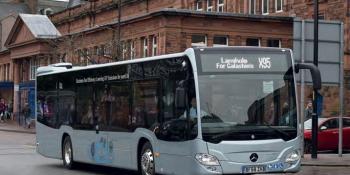Reducing funding for buses while pouring more money into a rail network which serves a minority of communities is unlikely to deliver the Welsh Government’s planned reductions in car traffic and carbon emissions, argues RHODRI CLARK
For the last two years, Wales has been regarded by many transport professionals as an exemplar of what other areas of the UK need to do in order to meet their commitments on climate change and road safety.
The turning point was the publication of Llwybr Newydd: the Wales Transport Strategy 2021. This weeded out the contradictions commonly seen in transport strategies by aligning all policies to three priorities: bringing services to people to reduce the need to travel; allowing people and goods to move more easily by accessible, sustainable transport; and encouraging people to make the change to more sustainable transport.
Llwybr Newydd, which means “new path”, was itself aligned to other Welsh Government commitments, including that decisions made today should not have negative impacts on the wellbeing of future generations.
Llwybr Newydd also linked to the Net Zero Wales Plan for reducing carbon emissions at the required speed and scale to meet the binding target, set …




